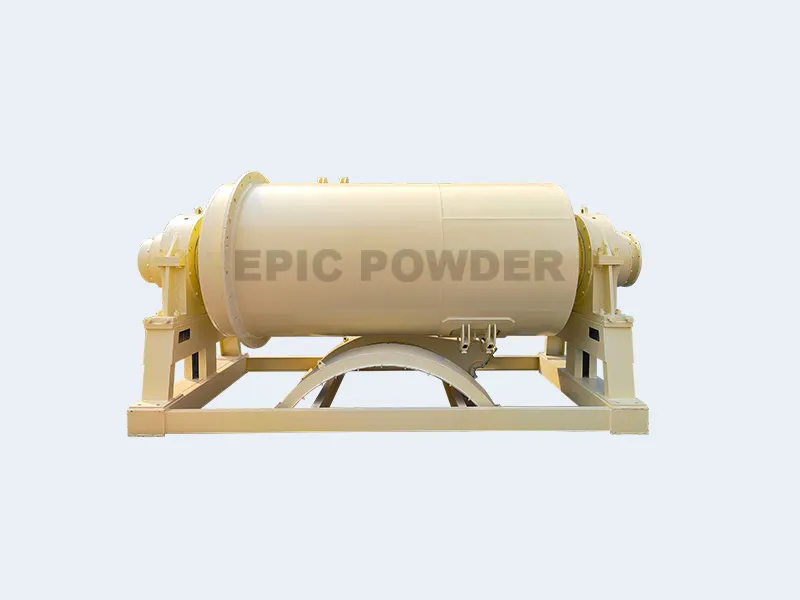Aerated concrete blocks, also known as Autoclaved Aerated Concrete (AAC), are lightweight building materials. They are made from siliceous materials such as fly ash or quartz sand, and calcareous materials like lime or cement. Aluminum powder serves as the foaming agent.
The blocks are produced through batching, mixing, casting, pre-curing, cutting, and autoclaving. Their main features are light weight, moderate strength, insulation, soundproofing, and fire resistance. Aluminum powder is the key—it creates porosity and lightness.

The Role and Mechanism of Aluminum Powder
During production, fine aluminum powder (generally d97 ≤ 63 μm) is added into the slurry as aluminum paste. It reacts with lime and cement in an alkaline environment. This reaction releases hydrogen gas:
2Al + 3Ca(OH)₂ + 6H₂O → 3CaO·Al₂O₃·6H₂O + 3H₂↑
The hydrogen gas creates many fine and evenly distributed bubbles. The slurry expands and forms a uniform porous structure. After pre-curing and autoclaving, these pores remain, producing lightweight AAC blocks.
Why is Aluminum Powder Necessary?
Unique foaming effect – The hydrogen released from aluminum powder ensures fine and stable pore formation.
Key to lightweight properties – Without aluminum powder, AAC cannot achieve its low density of 500–700 kg/m³, which is only about one-fifth of normal concrete.
Foundation of enhanced performance – The thermal insulation, soundproofing, and water resistance of AAC blocks all rely on the porous structure generated by aluminum powder.

Performance Advantages Brought by Aluminum Powder
- Excellent Sound Insulation
The closed-cell porous structure absorbs sound effectively.
- Tests show that a 10 mm AAC wall can achieve 41 dB sound reduction, far better than clay bricks.
- Strong Earthquake Resistance
With a bulk density only 1/4–1/5 of clay bricks, AAC blocks greatly reduce building self-weight. During earthquakes, their small inertia and good integrity improve seismic safety. - Superior Thermal Insulation
The thermal conductivity of AAC blocks is only 0.11–0.16 W/(m·K), about one-fourth to one-fifth that of clay bricks.
- A 20 cm thick AAC wall provides the same insulation as a 49 cm thick clay brick wall, contributing significantly to energy-saving buildings.
- Outstanding Water Resistance
AAC contains numerous independent closed pores, so water absorption and moisture penetration are slow.
- The time for AAC to reach full saturation is about five times longer than clay bricks.
- In bathrooms, after simple surface treatment, tiles can be applied directly onto AAC walls.
- Convenient Construction
AAC blocks are lightweight and easy to process—they can be cut, drilled, and milled on site, improving efficiency and reducing labor costs.

Comprehensive Value of AAC Blocks
Energy-saving and eco-friendly: Production often uses fly ash, sand, and other by-products. This makes AAC a green material.
Cost reduction: Lighter structures use less concrete and steel in foundations and frameworks.
Meeting modern needs: AAC blocks fit the demand for lightweight, energy-efficient construction.
Conclusion
Aluminum powder is essential in AAC production. Its reaction with lime and cement generates hydrogen gas. The gas creates pores that make AAC light, insulating, soundproof, water-resistant, and earthquake-resistant.
Because of aluminum powder, AAC blocks are widely used today. They promote green, energy-efficient, and sustainable construction.
Epic Powder
Epic Powder, 20+ years of work experience in the ultrafine powder industry. Actively promote the future development of ultra-fine powder, focusing on crushing, grinding, classifying and modification process of ultra-fine powder. Contact us for a free consultation and customized solutions! Our expert team is dedicated to providing high-quality products and services to maximize the value of your powder processing. Epic Powder—Your Trusted Powder Processing Expert !
